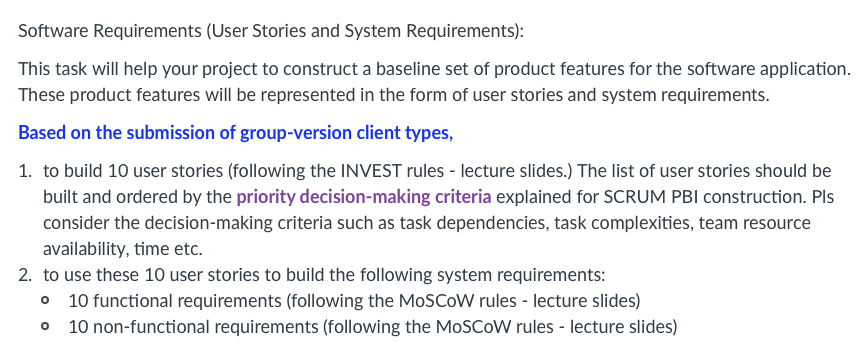
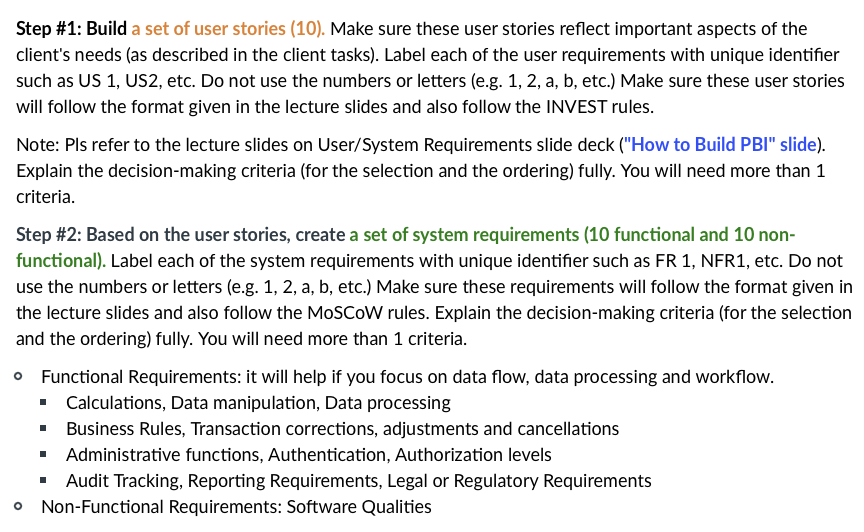
Client Types:
Nurse
Receptionist
Medical Director
Template:
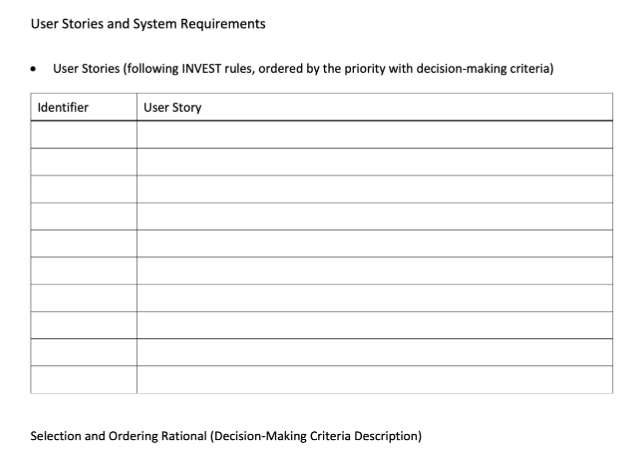
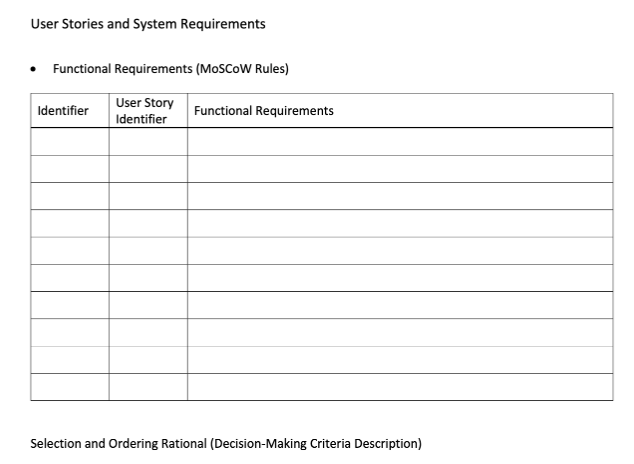
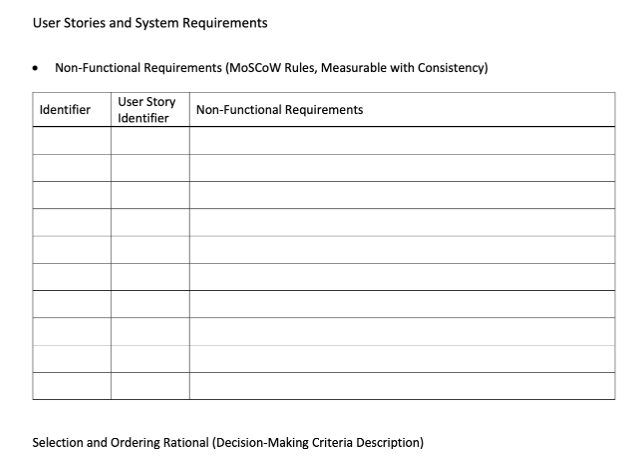
Software Requirements (User Stories and System Requirements): This task will help your project to construct a baseline set of product features for the software application. These product features will be represented in the form of user stories and system requirements. Based on the submission of group-version client types, 1. to build 10 user stories (following the INVEST rules - lecture slides.) The list of user stories should be built and ordered by the priority decision-making criteria explained for SCRUM PBI construction. PIs consider the decision-making criteria such as task dependencies, task complexities, team resource availability, time etc. 2. to use these 10 user stories to build the following system requirements: - 10 functional requirements (following the MoSCoW rules - lecture slides) - 10 non-functional requirements (following the MoSCoW rules - lecture slides) Step \#1: Build a set of user stories (10). Make sure these user stories reflect important aspects of the client's needs (as described in the client tasks). Label each of the user requirements with unique identifier such as US 1, US2, etc. Do not use the numbers or letters (e.g. 1, 2, a, b, etc.) Make sure these user stories will follow the format given in the lecture slides and also follow the INVEST rules. Note: PIs refer to the lecture slides on User/System Requirements slide deck ("How to Build PBI" slide). Explain the decision-making criteria (for the selection and the ordering) fully. You will need more than 1 criteria. Step \#2: Based on the user stories, create a set of system requirements (10 functional and 10 nonfunctional). Label each of the system requirements with unique identifier such as FR 1, NFR1, etc. Do not use the numbers or letters (e.g. 1, 2, a, b, etc.) Make sure these requirements will follow the format given in the lecture slides and also follow the MoSCoW rules. Explain the decision-making criteria (for the selection and the ordering) fully. You will need more than 1 criteria. - Functional Requirements: it will help if you focus on data flow, data processing and workflow. - Calculations, Data manipulation, Data processing - Business Rules, Transaction corrections, adjustments and cancellations - Administrative functions, Authentication, Authorization levels - Audit Tracking, Reporting Requirements, Legal or Regulatory Requirements - Non-Functional Requirements: Software Qualities User Stories and System Requirements - User Stories (following INVEST rules, ordered by the priority with decision-making criteria) Selection and Ordering Rational (Decision-Making Criteria Description) User Stories and System Requirements - Functional Requirements (MoSCoW Rules) Selection and Ordering Rational (Decision-Making Criteria Description) User Stories and System Requirements - Non-Functional Requirements (MoSCoW Rules, Measurable with Consistency) Selection and Ordering Rational (Decision-Making Criteria Description)











